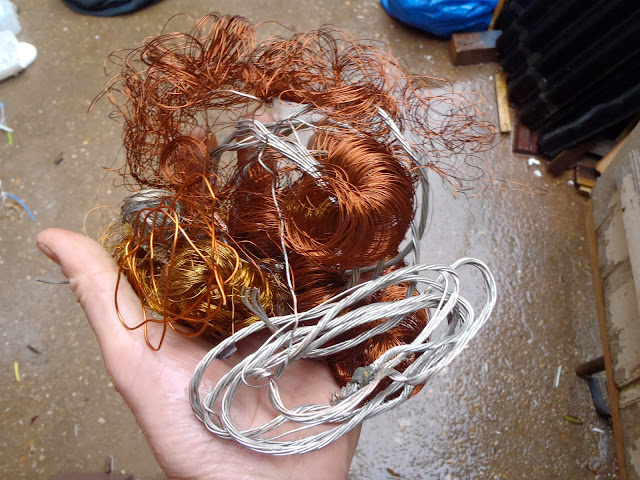Here's a couple of useful tips that will make your fishing life a little easier.
Now I presume every man alive possesses a Victorinox Swiss Army knife and that it's the classic one with two blades, can and bottle opener cum screwdrivers, corkscrew, a pair of useless tweezers too weak to be capable of extracting a splinter and a toothpick at hand for when a piece of sunday lunch lamb gets lodged between molars.
What most owners of this indispensable key fob tool don't know is that it's capable of carrying another really useful tool that will do the job the tweezers can't and in a secure place where few would expect it.
There's a little hole in the sideplate in the corkscrew housing that will accept a ball-headed pin and keep it captive once the corkscrew is closed. Amazing that the Swiss Army never thought of using it for the purpose (what is its purpose?) but having a sharp pin about the person is a useful thing for all kinds of jobs.
For fishing I use it to unravel that most annoying curse of the fine tackle angler — the wind knot.
Nothing else will do the job as well as a very sharp pin does.
The second tip is to let one of those rare earth neodymium magnets live on your key collection. Tiny little inconsequential looking things — they have an attraction to ferrous metals way beyond their size. Just get one and drop it onto the keys, fobs and rings, and it will exist there faithfully, never ever leave you, and be ever ready whenever its considerable powers are required.
Mine has never once dropped off. It just can't do that. Its power is such that it needs no attachment device of any kind, and one small magnet will hang the whole bunch from an iron door handle...
For angling its primary use it that of tying rigs and keeping and finding swivels and hooks. Take one from the packet, attach it to the magnet, and it will be there forever should you forget about it. Lose one in the grass, run the keys over its approximate position, and it will find the magnet by jumping out of its hidden lair like a flea finds its dog.
Just don't let it near the trays in the tackle box or you'll have all your lures attached!
.... actually, that suggests a further use.
With nothing more elaborate than a single blob of glue, I'm now considering sticking them on the butts of all my rods that don't possess whipped-on wire hook-keepers...
Now there's a neat and tidy idea!
Now I presume every man alive possesses a Victorinox Swiss Army knife and that it's the classic one with two blades, can and bottle opener cum screwdrivers, corkscrew, a pair of useless tweezers too weak to be capable of extracting a splinter and a toothpick at hand for when a piece of sunday lunch lamb gets lodged between molars.
What most owners of this indispensable key fob tool don't know is that it's capable of carrying another really useful tool that will do the job the tweezers can't and in a secure place where few would expect it.
There's a little hole in the sideplate in the corkscrew housing that will accept a ball-headed pin and keep it captive once the corkscrew is closed. Amazing that the Swiss Army never thought of using it for the purpose (what is its purpose?) but having a sharp pin about the person is a useful thing for all kinds of jobs.
For fishing I use it to unravel that most annoying curse of the fine tackle angler — the wind knot.
Nothing else will do the job as well as a very sharp pin does.
The second tip is to let one of those rare earth neodymium magnets live on your key collection. Tiny little inconsequential looking things — they have an attraction to ferrous metals way beyond their size. Just get one and drop it onto the keys, fobs and rings, and it will exist there faithfully, never ever leave you, and be ever ready whenever its considerable powers are required.
Mine has never once dropped off. It just can't do that. Its power is such that it needs no attachment device of any kind, and one small magnet will hang the whole bunch from an iron door handle...
For angling its primary use it that of tying rigs and keeping and finding swivels and hooks. Take one from the packet, attach it to the magnet, and it will be there forever should you forget about it. Lose one in the grass, run the keys over its approximate position, and it will find the magnet by jumping out of its hidden lair like a flea finds its dog.
Just don't let it near the trays in the tackle box or you'll have all your lures attached!
.... actually, that suggests a further use.
With nothing more elaborate than a single blob of glue, I'm now considering sticking them on the butts of all my rods that don't possess whipped-on wire hook-keepers...
Now there's a neat and tidy idea!
































